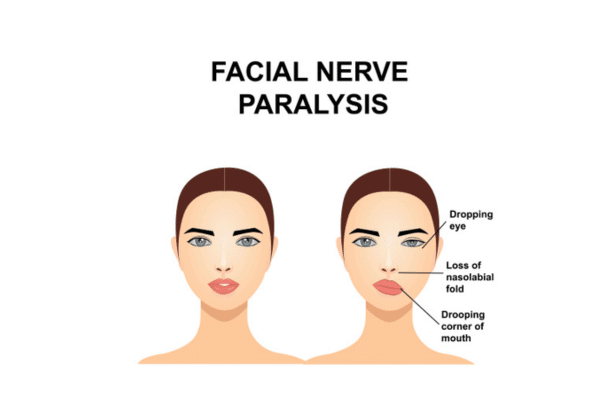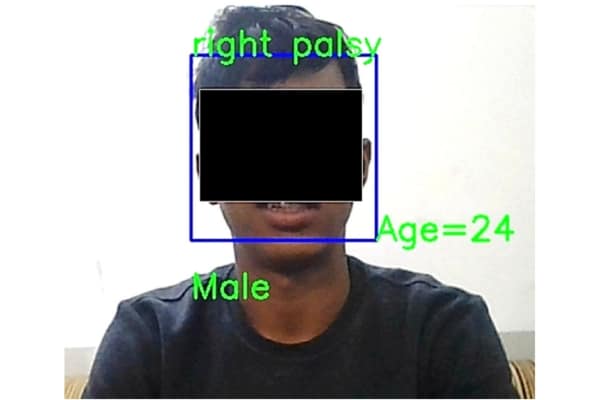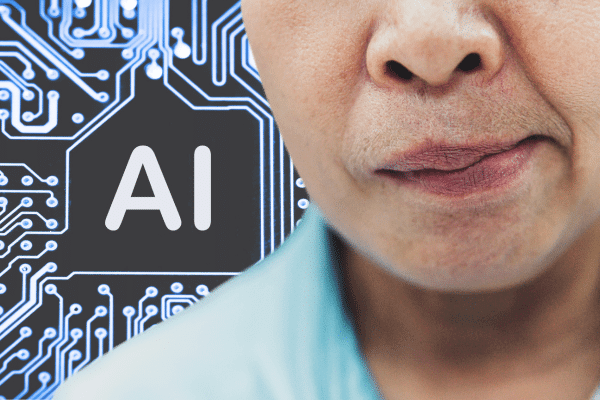A ground-breaking development in the field of neurology promises to enhance the accuracy of detecting facial palsy – a neurological disorder characterised by temporary muscle weakness or paralysis on one side of the face.
Facial palsy, affecting approximately 1 in 60 people worldwide during their lifetime, can stem from various causes such as impairment of the facial nerve, tumours, infections, or strokes.
Traditional diagnostic methods often fall short due to the condition’s subtle presentation of symptom, leading to misdiagnosis in up to 20% of cases.
AT A GLANCE
· Facial palsy affects approximately 1 in 60 people worldwide during their lifetime.
· New AI tool offers rapid, objective diagnosis, potentially aiding high-risk groups.
· Women, especially pregnant and middle-aged, benefit most from accurate facial palsy diagnosis.
· The innovation is a collaboration between Prof. Javaan Chahl of the University of South Australia and Prof. Ali Al-Naji of the Middle Technical University in Baghdad, Iraq.

A collaboration between researchers from Iraq and Australia has led to the development of a diagnostic tool that leverages artificial intelligence (AI) and digital cameras to detect facial palsy with an impressive 98% accuracy rate, including identifying the patient’s gender and age.
Professor Javaan Chahl, a remote sensing engineer at the University of South Australia and one of the lead researchers, told Indian Link, “Using computer vision systems to detect facial palsy can not only prevent misdiagnosis, but also save patients and medical specialists time, effort, and cost.”
Collaborating with Prof. Ali Al-Naji of the Middle Technical University in Baghdad, the system Prof. Chahl helped design functions as a screening tool, detecting symptoms and referring patients for further consultation. It holds the potential to revolutionise clinical practice by enabling more frequent monitoring via mobile phones, facilitating interaction between patients and healthcare professionals.
“Whilst a human doctor may achieve good accuracy, they will always require time,” Prof. Chahl described, highlighting the speed and objectivity of the new AI tool. “Our system also includes options to automatically keep an eye on a subject over time, perhaps from day to day, so that a baseline of facial dynamics can be established, allowing even more rapid and subtle detection.”
Detecting facial palsy from visual examination can be inaccurate because the condition often mimics other conditions and can be
subtle in its presentation. Detection followed by investigation is important because possible causes include stroke, HIV infection, multiple sclerosis, Guillain-Barré syndrome, and Lyme disease.

The research involved in detecting facial palsy using AI
Using a dataset of 26,000 images, containing 19,000 normal images and 1600 facial palsy images, the team employed AI techniques to train computer vision systems to recognise the condition, differentiating them from healthy individuals. They then took photos of 20 patients with different degrees of facial palsy, using an algorithm to detect the condition in real time, as well as identifying their approximate age and gender.
The research began nearly ten years ago by Prof Al Naji and Prof Chahl as they explored the possibility of non-contact neonatal instrumentation using computer vision.
“My own research background has been in drone applications and robotics, which helps a lot when thinking about systems like this, which are basically stationary robots with their own vision system,” Prof Javaan Chahl revealed.
He explained, “Our research team, spread between Iraq and Australia, has a strong emphasis on cost effective equipment concepts that could improve the lives of people even when resources are limited. We usually apply mass market imaging devices and single board computers.”

Potential benefits and future implications
People most at risk of developing facial palsy are usually aged between 30 and 45 years, pregnant women, diabetics, and those with a family history. The left side of the face is also more likely to be affected, but the condition normally resolves spontaneously within six months.
The potential benefits of this technology are immense. Statistically, women, particularly pregnant women and the middle-aged, stand to benefit the most from more frequent and accurate diagnoses of facial palsy, although all people have a chance of suffering from facial palsy at any time in their life. “Considering the risk of more serious conditions underlying the paralysis, the elderly probably stand to benefit the most,” Prof Chahl added.
Looking ahead, the researchers plan to refine and expand the capabilities of the diagnostic tool. By advancing the science and spurring new research, they aim to pave the way for viable commercial applications.
However, transitioning from research testing to clinical implementation poses challenges, including regulatory hurdles and extensive testing requirements. “There are layers of additional software, safeguards and engineering standards that must be complied with, not to mention huge amounts of testing. Ultimately the barrier is a combination of cost and time. Industry is better equipped to undertake this than universities. We anticipate that industry will be keeping an eye on academic developments such as this and working out how to deploy capital to create viable commercial applications.”
For healthcare professionals and researchers interested in leveraging AI and digital imaging technologies for medical diagnostics, Prof Javaan Chahl offered valuable advice: “These technologies are coming, although perhaps more slowly than some might be projecting. There are substantial regulatory hurdles as the field of medical equipment is quite conservative. I would be expecting a lot of computer vision to appear in screening solutions, remote and emergency medicine quite soon though, where options are more limited.”
Read more: Writing by hand may be better for your brain than typing




